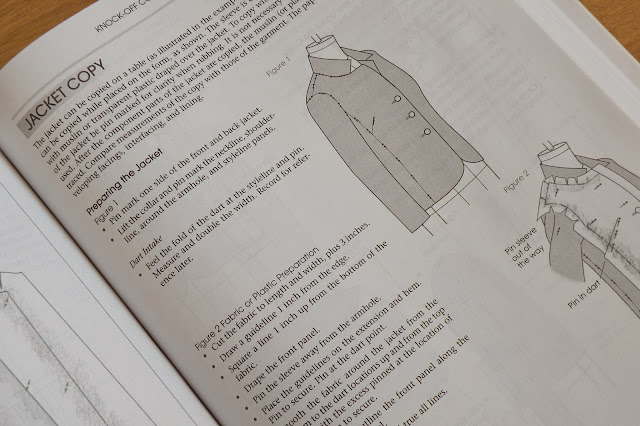
Now that our other house is sold I've finally got myself a 'little' present: Helen Joseph-Armstrong's 'Patternmaking for Fashion designs' book! (Actually, the book is quite expensive, that's why I had to wait so long to purchase it.) This is THE BOOK for pattern making courses since the late 80's.
I.m.o. it is a very good book if you have basic understanding of pattern construction, because the instructions are not very detailed. But, it is a great resource if you want to play with a good fitting basic pattern and try out different designs by tweaking, replacing the darts, add fullness etc. Something they did excellent back in the 1930's and 40's! Just take a look at the amazing variations of seam-lines, dart placings and gathering on the bodices.
I can imagine a beginner seamstress being overwhelmed by the amount of information and the lack of instructions on the actual sewing and finishing of the garments in this book, but I'm totally in love! I'm always curious how garments are constructed and trying to figure out how to re-construct vintage patterns for myself.
The designs are based on the three principles of pattern making:
- darts manipulation (relocating of darts)
- added fullness (adding more fabric in the design)
- contouring (fitting to the hollows of the figure)

when looking at all those dart-lines, I think 40's!


there is an instruction on how to alter the basic sloper to get the designs:

my favorite chapter is the one on necklines and relocating darts:






Are you looking for a good beginner level book on pattern making? 'The principles of flat pattern design' by Nora MacDonald seems to be a very good one. I don't own it, but according to the information on the net things are explained much more in a step-by-step way, starting with basic sloper patterns, although the variation of the designs seems to be less extensive.

No comments:
Post a Comment